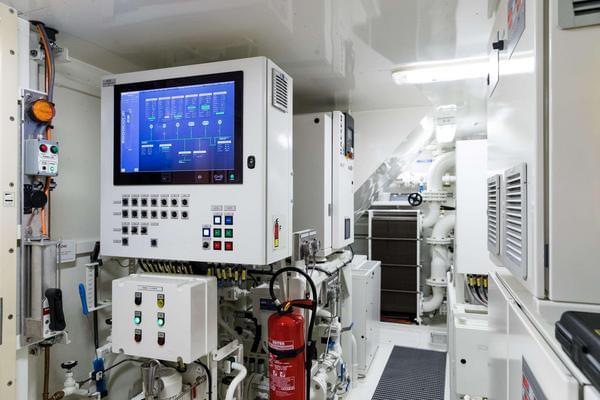
Romeo United Yachts brings together luxury yachts by type of propulsion.
Contemporary luxury motor yachts moved with water jets, surface drives, traditional shafts with propellers, inboard engines with outdrives, outboard engines and pods. Boats with a hybrid powerplant go with usual shafts with propellers and, sometimes, pods. Any choice of drive type can be the most proper for the owner's requirements and most suitable for how the boat operates.
Understanding the profits of any distinct drive can give you a precise idea of what sort of vessel is right for you. We do our best to explain the benefits of each type of propulsion.
Browse below to understand what drive type can benefit you as a user of a luxury yacht. Don't wait to talk to a Romeo United Yachts specialist for more knowledge.
Motor Yachts equipped with water jets:
Waterjets become an obvious choice to get the boat moved when equipped with big powerful engines which bring the vessel to high speed.
Waterjets can handle the power of the most powerful engines and provide the thrust to reach speeds up to 55 knots and even more. One of the great things about waterjets is the absence of noise and vibration. When water passes through the water jet, the flow becomes linear, and a yacht will not encounter the momentum which traditional left hand or right hand rotating shafts can create. You can see water jets with twin-engine setup onboard fast luxury yachts of 80 ft/24m and bigger. Also, there are fast yachts that have triple engines with even more power on hand. Port and starboard jets are steerable, while the central engine and water jet coupled to it is playing the role of a booster.
Fast yacht manufacturers install water jets for many years: Mangusta, Pershing, AB yachts, to name a few. Jets can propel a much bigger vessel, up to 180 meters long. The largest yacht with jets is 180 m Lürssen 'Azzam' equipped with two diesel engines, two gas turbines and four water jets. Another plus point is the reduced draft of the boat fitted by a water jet what allows it to enter the most shallow areas. One may ask what the downsides of water jets are? The downside is the fuel burn rate. Usually, vessels equipped with water jets have less autonomy than traditional shafts.
Manufacturers with a distinguished history and reliability build the most dependable water jet units - KaMeWa and MJP.
Scroll down to see yachts with water jet propulsion.
Yachts with a hybrid power plant:
Recent years saw keen interest from yacht owners in hybrid power plants in the machine halls of luxury superyachts. As now the world goes green, future and existing owners consider hybrid yacht ownership as their contribution to saving the oceans and seas. We are proud to showcase the most comprehensive selection of the existing hybrid luxury boats and yachts available for sale and pre-order.
We explain the advantages of a hybrid yachts as Q and A:
Q: Does hybrid mean that a yacht can operate in different modes?
A: Hybrid power can be used in different modes while moving:
Q: What is a hybrid motor yacht, and why this set-up is called a ‘hybrid’?
A: Hybrid power on a motor yacht means that the vessel is driven by diesel engines operating together with electric motors. The advantage of hybrid power is much more comfortable navigation as the boat can run on electric motors alone, much quieter than diesel engines. That is especially useful when a yacht moves in the night when silence onboard is essential
Q: What are the components of a hybrid system?
A: The main components of a hybrid power are a) Electric motors, b) Rechargeable batteries,с) Diesel engines and d) diesel generators
Q: Does hybrid power allow to stay at anchor without running diesel generators?
A: Yes, as there are powerful electric batteries onboard which supply electric power to air-condition and other electric appliances so that you can stay at anchor in absolute tranquillity without a need to run diesel generators.
Q: What other advantages has a hybrid yacht over traditional diesel engines?
A: A hybrid yacht probably will have a better value than the one equipped with diesel engines. That means that a hybrid sells faster on a pre-owned market and for a higher price.
Q: Ok, it all looks so good, so what are the downsides of this system?
A: The disadvantage of a hybrid is more often than not, the components require more space in the engine room than a traditional set-up. Another disadvantage is an added cost. Usually, builders ask for a premium for a hybrid system.
Q: Is going hybrid becomes a trend in a modern yacht building?
A: Yes, practically all leading shipyards have hybrid proposals in their portfolio.
One of the first builders who saw the beauty of this system was Holland Jachtbouw which introduced its silent running J-class yacht Rainbow back in 2012.





